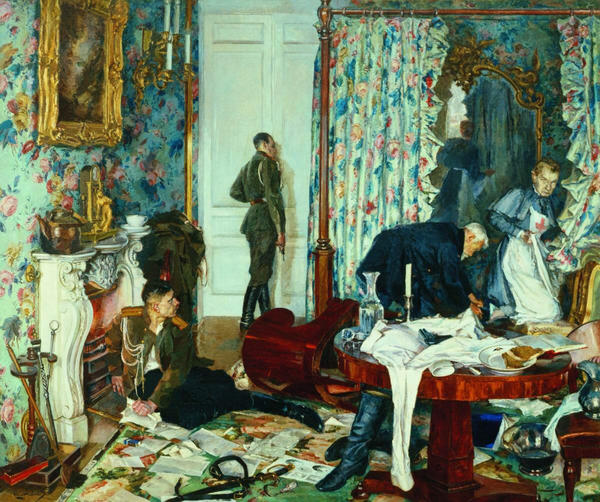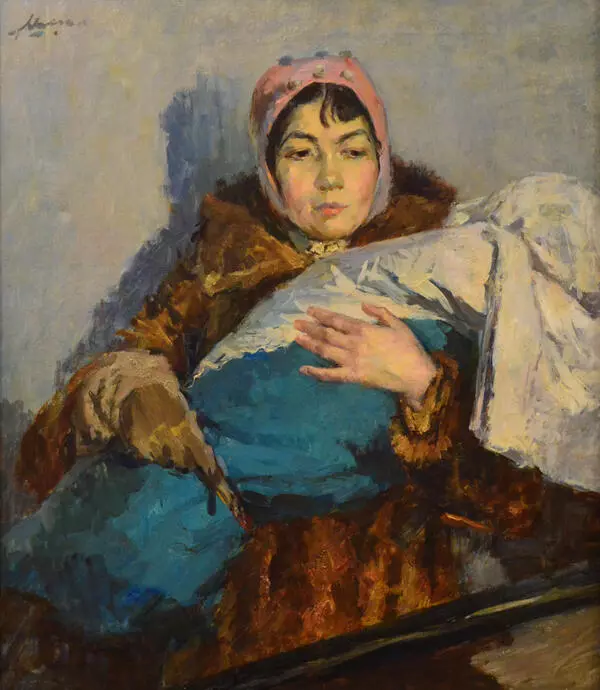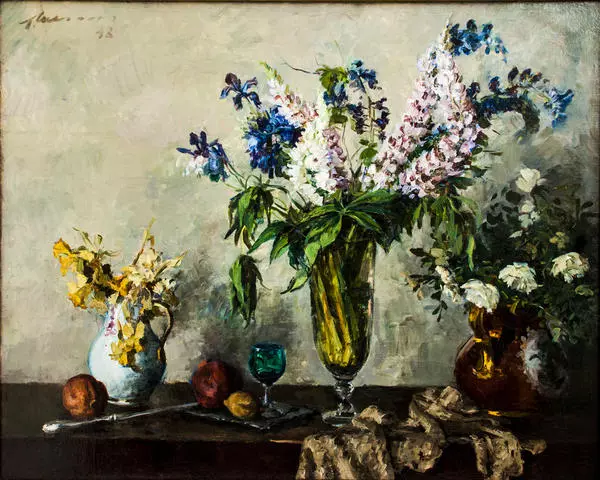Grigory Shegal painted the Portrait of Engine Driver in 1934. The canvas was created in the manner of Socialist realism; however, the influence of impressionist art, which Shegal had been fond of earlier, is also noticeable. The artist resorted to broad, deliberately careless strokes, depicting only the hero’s face in a clearer and more detailed way. The picture is built on the contrast of light and dark spots.
Portrait of Engine Driver
Creation period
1934
Dimensions
114,5x86 cm
Technique
Canvas, oil
Collection
Exhibition
5
Open in app#1
Grigory Shegal
Portrait of Engine Driver
#2
#15
For main colors Shegal chose silver and blue-black tones whose combination makes the work look solemn, similar to a ceremonial portrait. The engine driver’s black uniform against the light gray background highlights the figure and defines the center of the composition. The muted yellow color of the background enlivens the color scheme, making the dark shades seem not so gloomy.
#16
Grigory Shegal was born in 1889. He became interested in painting when he worked as an apprentice engraver in Smolensk. Shegal wanted to study at an art school; for three years he was preparing for exams for a general education certificate and spent almost all his earnings on classes with a tutor. After that he moved to Petrograd and in 1912 entered the Drawing School of the Society for the Promotion of Arts. Painting was taught by famous artists of the time, Arkady Rylov and Nikolai Roerich.
#17
In the years 1917 and 1918 he studied at the Academy of Fine Arts, taking classes from illustrator Ivan Bilibin. However, he managed to complete his education only in 1925: by that time Shegal had graduated from VKHUTEMAS (Higher Art and Technical Studios).
#12
The artist exhibited his first works together with members of the Jack of Diamonds Association: Pyotr Konchalovsky, Aristarkh Lentulov, Ilya Mashkov, Mikhail Larionov. Since 1926, Shegal participated in exhibitions held by the Association of Artists of Revolutionary Russia.
#6
Grigory Shegal became one of the first masters of the industrial landscape. He worked in other genres as well, painting portraits, landscapes, and plot works based on historical events. A reproduction of his painting The Flight of Kerensky from Gatchina in 1917 was often printed in Soviet textbooks. In it, Shegal portrayed the chairman of the Provisional Government, Alexander Kerensky, dressed as a woman. The author’s creative invention quickly turned into a historical myth: even authoritative sources said that Kerensky had left Gatchina in women’s clothing.
#7
Grigory Shegal. The Flight of Kerensky from Gatchina in 1917, 1938.
#18
Belgorod State Art Museum
read morehide
00:00
00:00
1x
Portrait of Engine Driver
Creation period
1934
Dimensions
114,5x86 cm
Technique
Canvas, oil
Collection
Exhibition
5
Open in app
Share







